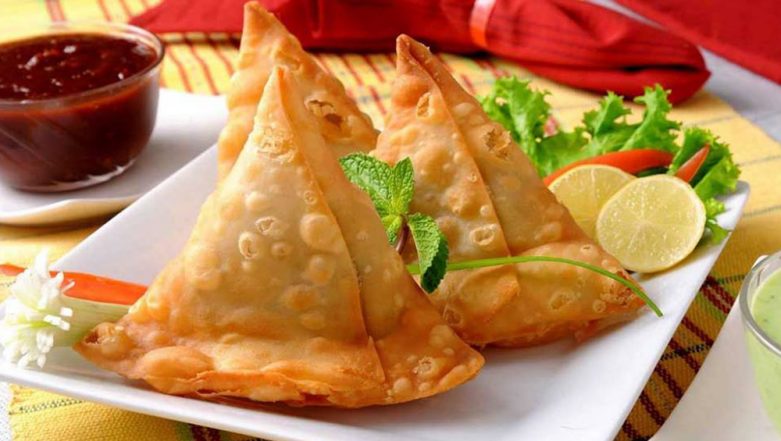Every year on September 5, people throughout the world celebrate World Samosa Day to honour the iconic street snack that originated in the Middle East but is now enjoyed in a wide variety of ways all over the world. This delicious deep-fried pastry from India is filled with mashed potatoes, paneer, and peas and is spiced with garam masala, chilli, mint, and other herbs and spices. The attraction of the samosa’s crunchy and spicy appeal makes it a perfect pairing with a cup of hot tea. To satisfy their demands for something hot and something sweet, many individuals enjoy pairing samosa and jalebi as their evening snack.
One of the most popular snacks in the world, samosas leave us hungry and want more. World Samosa Day is a holiday that is celebrated annually to honour this delectable delicacy all around the world.
Samosa cooking is really easy and requires little effort. They are created with dough, have a filling rich in potatoes, and have crispy outside layers, making them a delicious treat. Here are some interesting facts about this snack that will surprise you in honour of World Samosa Day on September 5.
– In India, Egypt, South Africa, and the Middle East, samosas are very well-liked.
– Contrary to popular belief, samosas are not native to India, despite the country’s immense popularity. Prior to the tenth century, it was created in the Middle East. Around the 13th and 14th centuries, traders carried it to India. Samosas are now so popular in India that you can find them wherever, from streets to upscale restaurants.
– Let’s make this obvious for anyone who believes that this is a highly fatty snack. Samosa provides roughly 300 calories, little under 20 grammes of fat, and more than 30 grammes of carbohydrates when cooked using high-quality components. Yes, it is definitely not a guilt-free snack.
– Samosa was a food the royalty consumed in the 13th century. They were traditionally consumed by great monarchs and noblemen in India as part of a lavish feast. Great monarchs and princes in Arab and Middle Eastern nations used to consume them as well.
– The samosa was described as “minced meat cooked with almonds, pistachios, onions and spices placed inside a thin envelop of wheat and deep-fried in ghee” by the legendary traveller Ibn Battuta in 1334. With its presence in the Ain-i-Akbari, which stated that among foods cooked with wheat there is the qutab, “which the people of Hind called the sanbusa,” the samosa also acquired a royal stamp.
– Samsa, somsa, sambosak, sambusa, samoosa, singada, samuza, sambosa, somasi, and somas are some of its other names.
– Samosa Paav is also available in locations like Maharashtra where it is sometimes served with Chola. It is created in both half-moon and triangle shapes in the Turkish-speaking countries where it is known as Samsa (and variations).
– The most popular style of samosa used worldwide is a vegetable version.
- Top 5 Health Insurance Stocks to Add to Your Portfolio - July 26, 2024
- 7 Reasons Edamame is Great for Your Health - July 26, 2024
- 2024 Paris Olympics: How Many US Athletes Are Competing? - July 26, 2024





